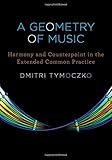I spent a long time researching where Western music "comes from". One important thing to understand is that the key feature of Western music is harmony. This is not the case for most other musical traditions. Harmony comes from a layering of independent melodic lines (called voices), such that they evolve in ways that create and resolve tensions. This is called counterpoint.
The ways in which these tensions resolve are called cadences, and classical music was all them. Musical form arises around how a piece of music is organized to have an arc (and arcs of arcs) that leads to a cadence. It's kind of like how there are only a few basic narrative structures in storytelling, yet infinite variations in types of stories.
The tension between the sounds in concurrent melodic voices emerges from the structure of the sounds. Harmonic sounds, like ones produced from wind and string instruments, sound good (consonant) when their fundamental frequencies are simple ratios. This is largely because of how the human auditory system works.
Our scales and chords come from picking collections of notes that approximate simple ratios. We deal with approximate ratios using nth-roots for two reasons. First, simple ratios don't compose well -- stack them (i.e. multiply them) and you get ratios that aren't so simple. nth-roots do stack nicely. Second, it lets us merge nearby flat and sharp notes. This wouldn't be possible if we used real ratios. That merger, known as enharmonicity, lets us do all sorts of cool compositional tricks that are generally considered more worthwhile than the slight improvement in sound quality we'd experience by using the real ratios. There are various ways to pick just which notes merge, but by far the most popular approach is to use 12 notes.
So, this is where we got our notes and scale from. This happened around the year 1800, give or take a couple decades.
The history of Western music since that point in time largely revolves around coming up with new ways to play with those 12 notes, in many ways erasing the musical features that caused the 12 notes to emerge in the first place. This is why the system of note names, with the flats and sharps, feels rather arbitrary today.
Unfortunately, there are not a lot of great resource that tell this full story. The two books I found most enlightening in piecing together the "real story" are:
- Tuning, Timbre, Spectrum, Scale: https://www.amazon.com/Tuning-Timbre-Spectrum-William-Sethar... - A Geometry of Music: https://www.amazon.com/Geometry-Music-Counterpoint-Extended-...
https://www.amazon.com/Geometry-Music-Counterpoint-Extended-...
http://www.amazon.com/Geometry-Music-Counterpoint-Extended-P...


After studying a basic amount of music theory, I have come to the conclusion that there is no such thing as canonical analysis. Analysis, in most theories, is a way of rationalizing what's become common practice in a given style.
One thing I learned when trying to research the origins of our music system is that our chord progressions appear to be underpinned by rules for multi-voice counterpoint. But in pop music, voicing isn't particularly important, it's just background for the bass and melody lines. So pure chord progressions tend to harken back to harmonic motion that's familiar from the more formal genres. A book I often recommend called A Geometry of Music [1] goes way down the rabbit hole, if you want to obsess over this to the extent that I did.
So, modal chord progressions (especially Locrian) really only tend make sense to the extent that they analogize major and minor chord progressions, from a functional tonality perspective. I don't think this is precise, but the way I think of it is that you sell the listener on alterations of major or minor scales, and they buy it after a few repetitions, and other signals of what the cadences are :)
[1] https://www.amazon.com/Geometry-Music-Counterpoint-Extended-...